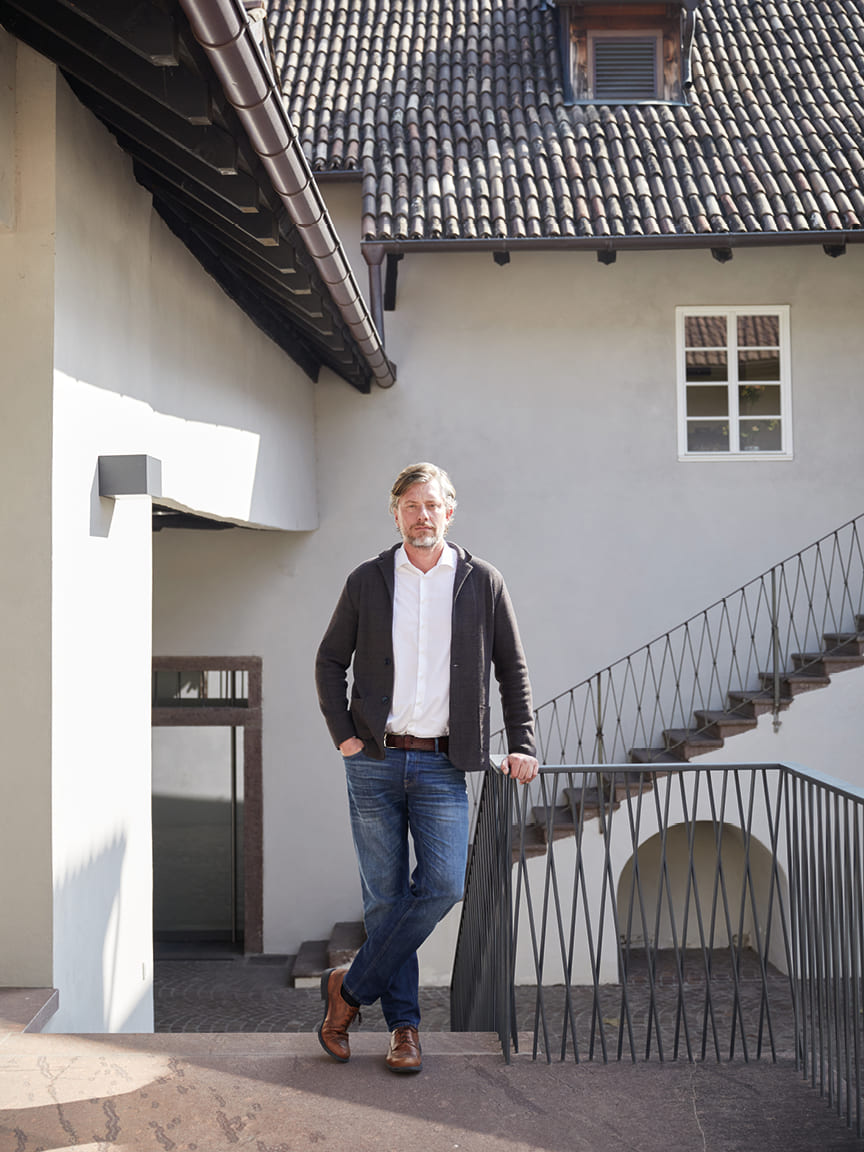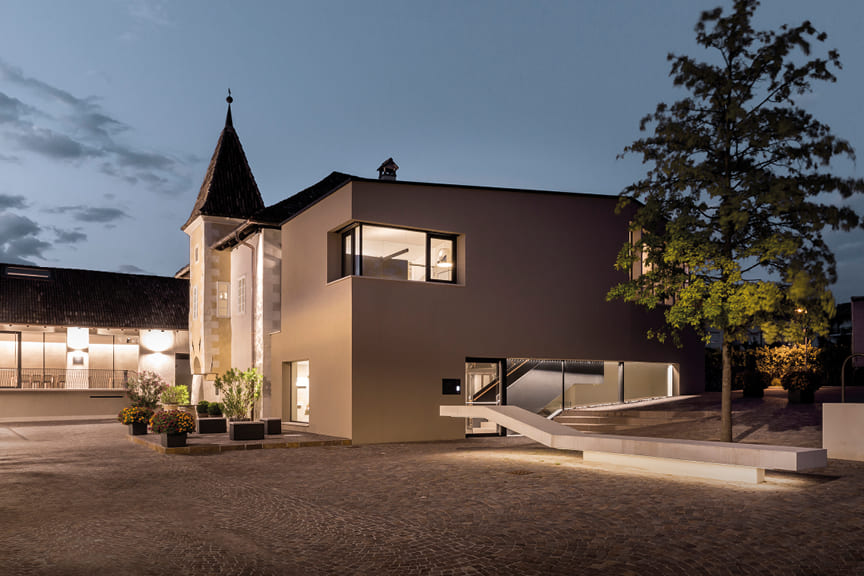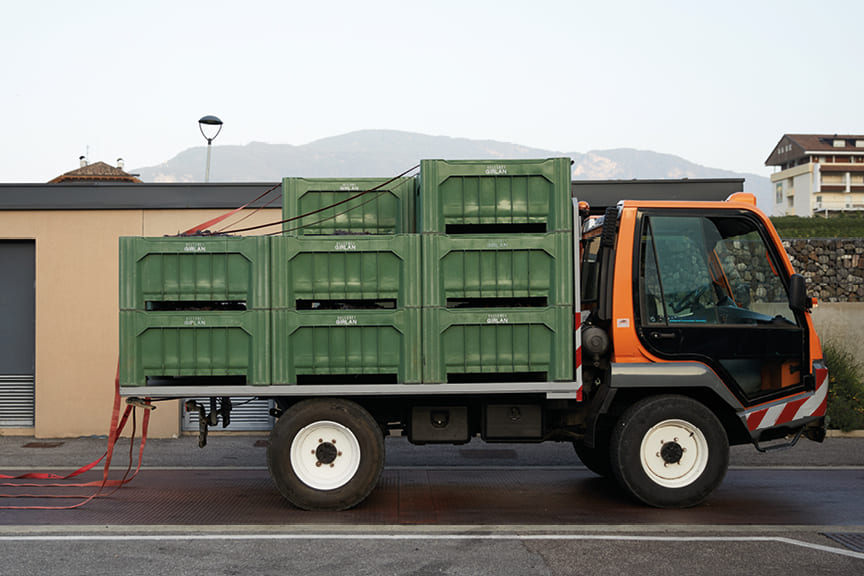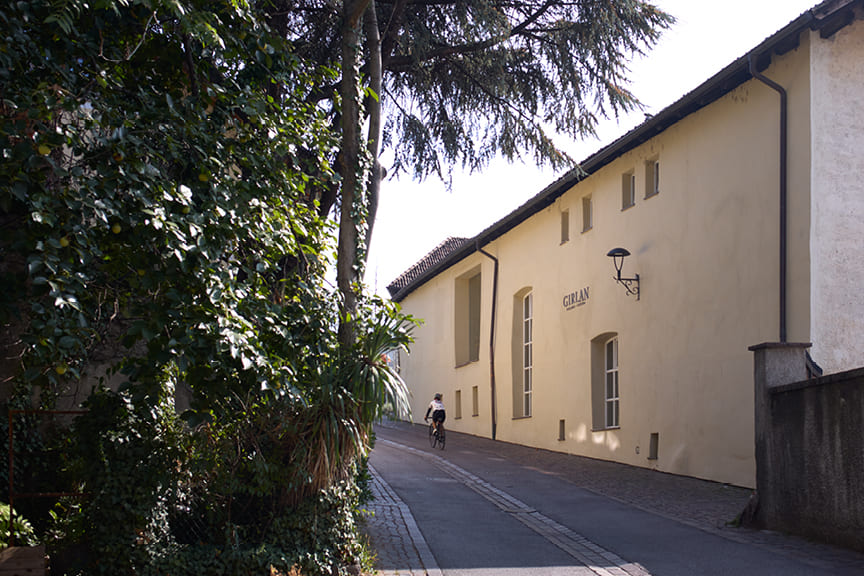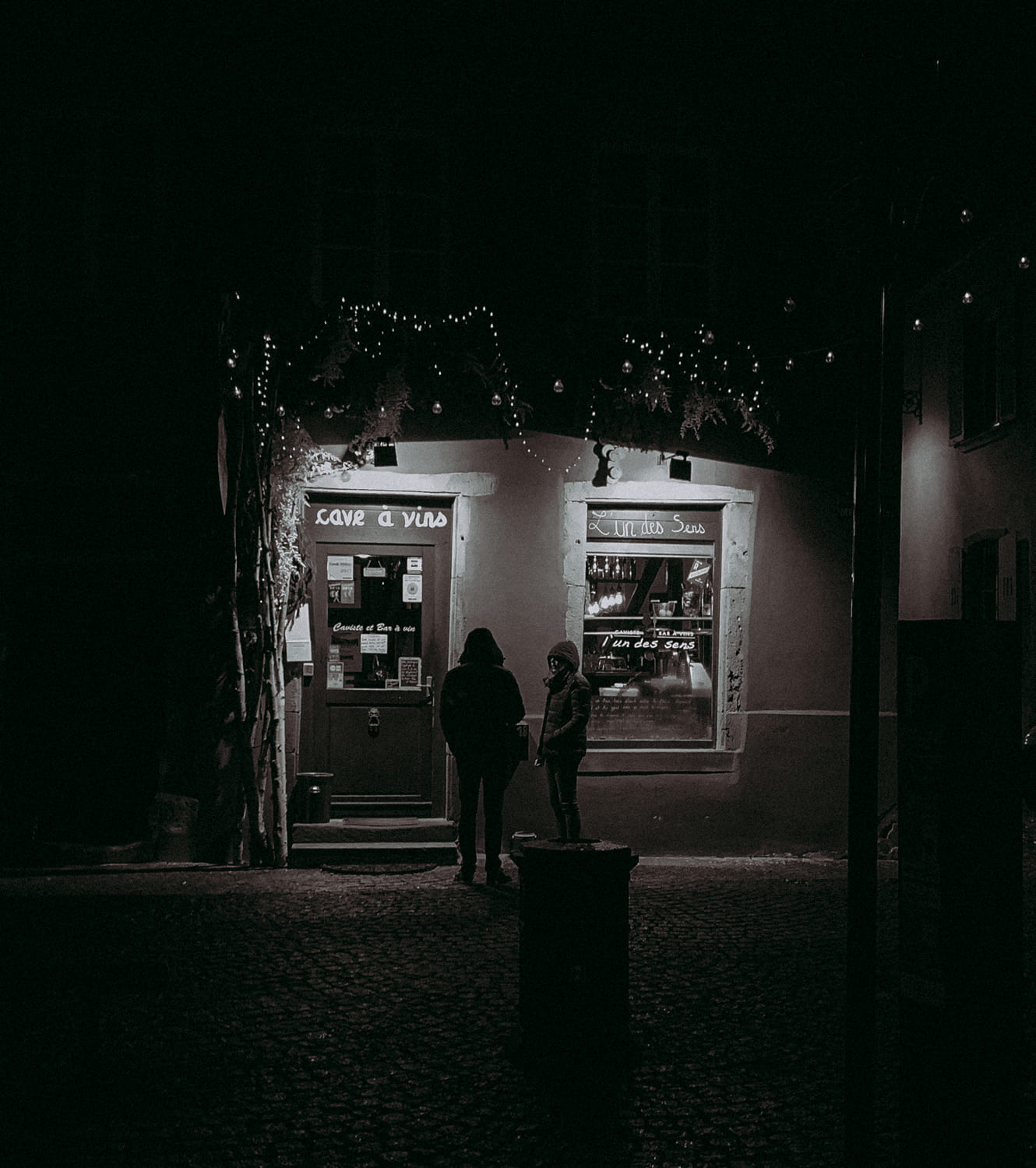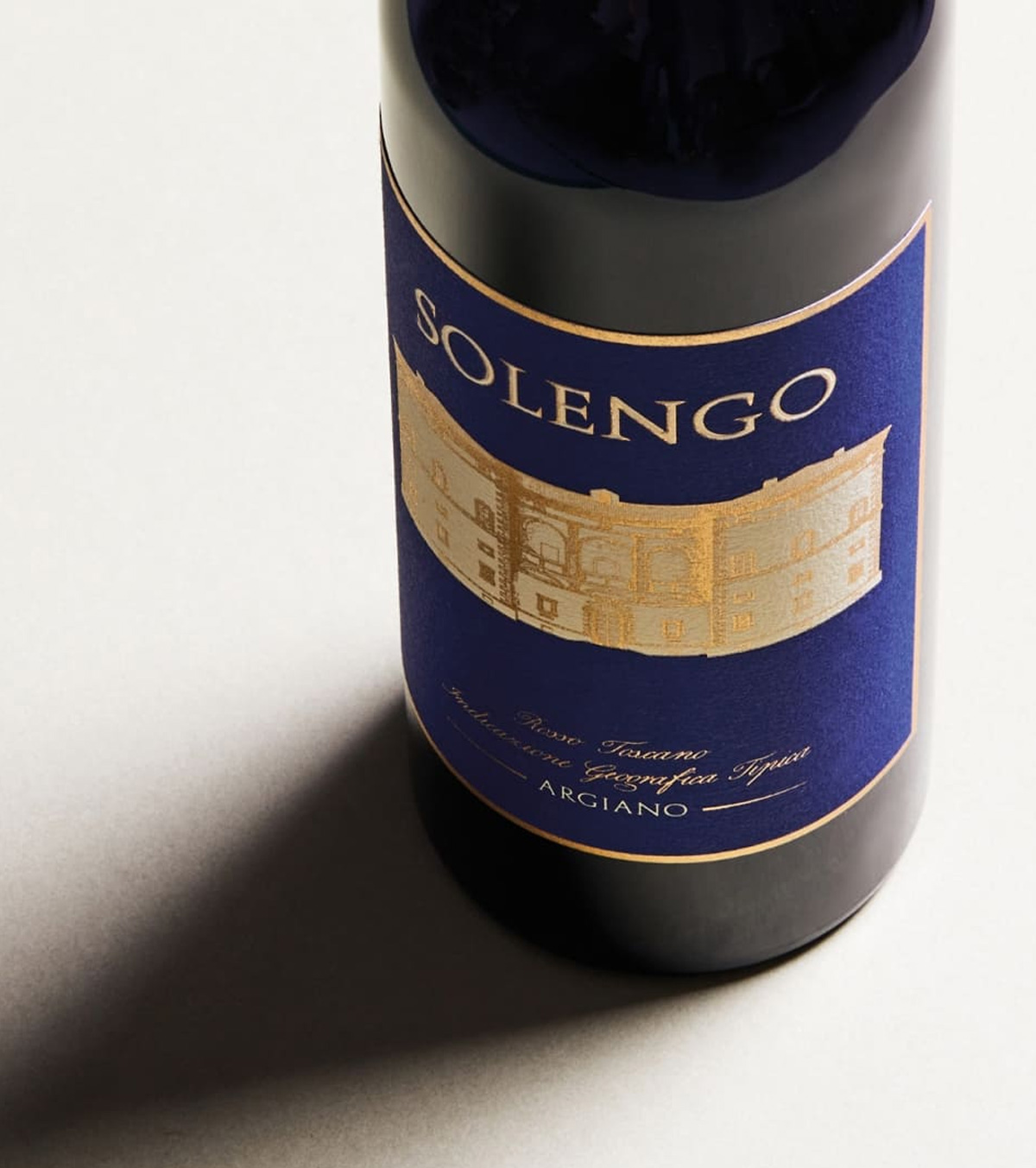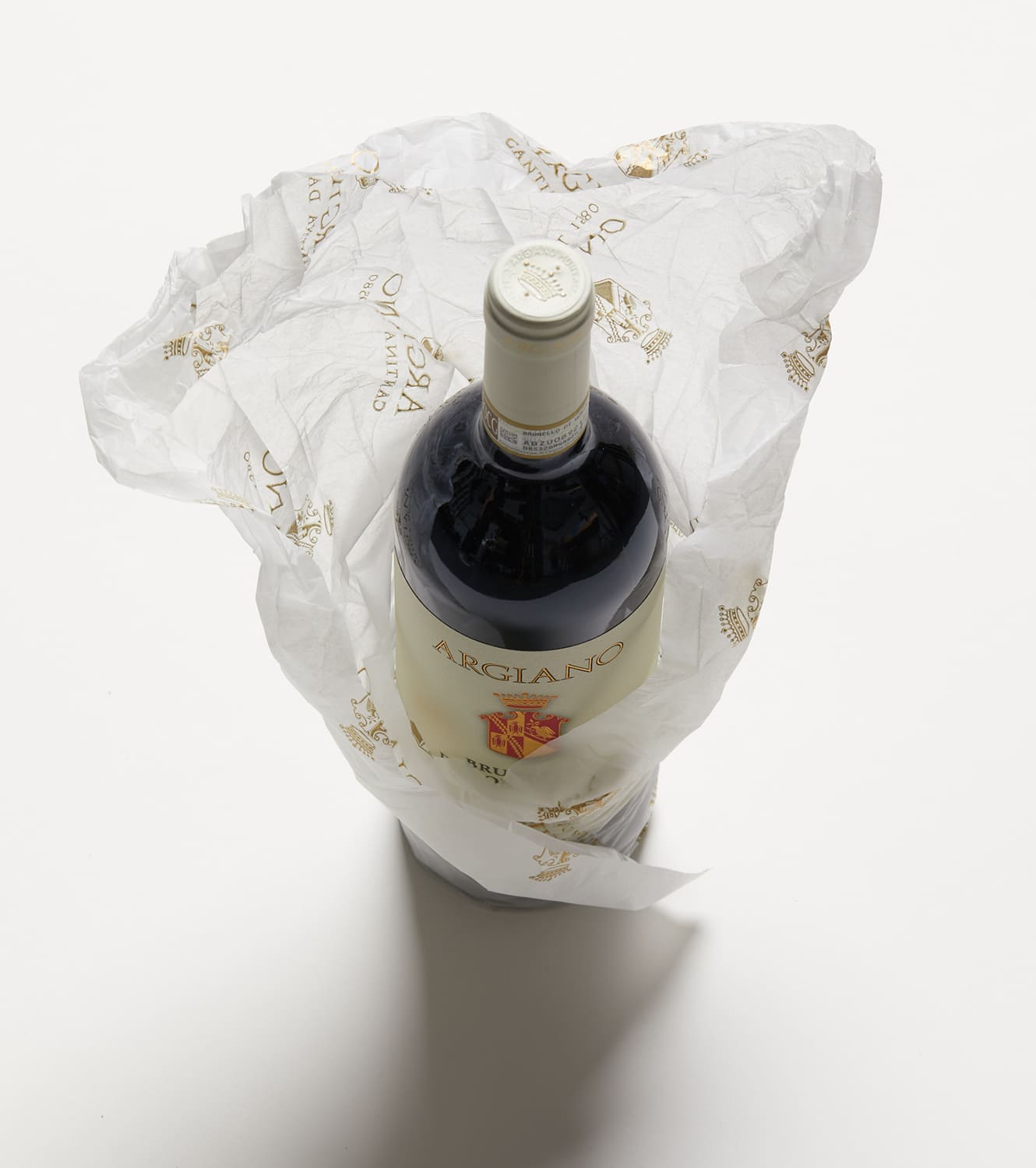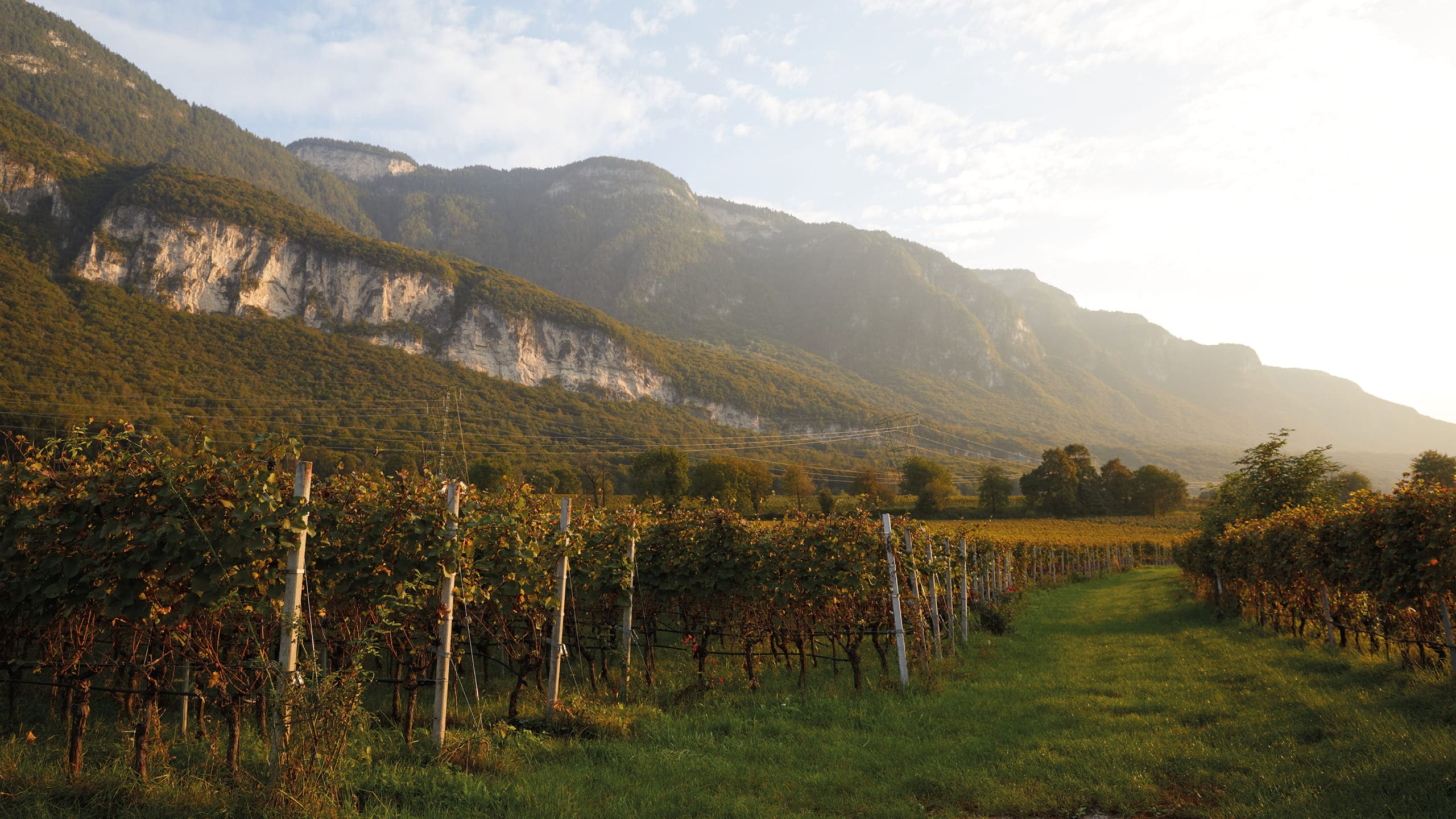
WINES WITHOUT BORDERS
Perched on the slopes of the Tyrolean Alps, Italian winery Cantina Girlan combines the best of Germanic efficiency and Latin creativity to produce fresh, crisp wines with a big personality. Nargess Banks pays a visit
Alto Adige is a worldly place. Also known as South Tyrol, Italy’s northernmost region is full of youthful energy, and the quality of life is considered among the country’s best. Perhaps this is a consequence of its complex history – the region only joined Italy after World War I – which has meant it has had to work a little harder. Or maybe its outward-looking culture is thanks to the favorable geography with easy access to Austria, Switzerland and Germany for some of the finest skiing in Europe, and the cultural hub of Milan, the Mediterranean sunshine and promise of dolce vita but a short drive away. Or it could be because everyone is bilingual linguistically and culturally in this autonomous region.
“People always talk about terroir, but the history of a place, the people and culture will have a huge impact on the wines,” says Oscar Lorandi. The chair of Cantina Girlan is a towering fifty-something with a warm, generous presence. Like so many employees of the winery we meet on our visit, he speaks English fluidly, has been educated abroad, in Vienna, and has spent time working and traveling the world.
On our way to Girlan, we had stopped off briefly in Alto Adige’s capital Bolzano, charmed by the success of its cultural fusion. On that sunny Tuesday, locals leisurely sipped coffee on the vast Piazza Walther, while others took their aperitivo in the smart sidewalk wine bars and ruddy-faced tourists dressed in hiking gear enjoyed jugs of craft beer. Wooden market stalls were busy selling Alpine cheese, dark Germanic bread and an array of cured meats, while hikers made their way to the nearby Dolomites, and cyclists pedaled by the designer boutiques.
“Alto Adige is a typical European border country where everyone is bilingual. We all speak Italian and German; perhaps the two cultures open your mind,” Lorandi offers. “Since we joined Italy only in 1920, people who grew up here have huge love and pride for Alto Adige. There is a strong sense of belonging and respect for tradition.”
The cultural fusion extends to the wines. Visiting the Girlan vineyards and cellar, you get a sense of a methodical approach mixed with imagination. “I’m happy you noticed,” smiles Lorandi when I mention this. “I also believe our culture reflects in the wines. Wine is a natural product, but the big difference is in who creates it. Our winemakers mostly studied in Austria and Germany but are influenced by Italy. You could say we take German rational thinking and blend it with Italian creativity.”
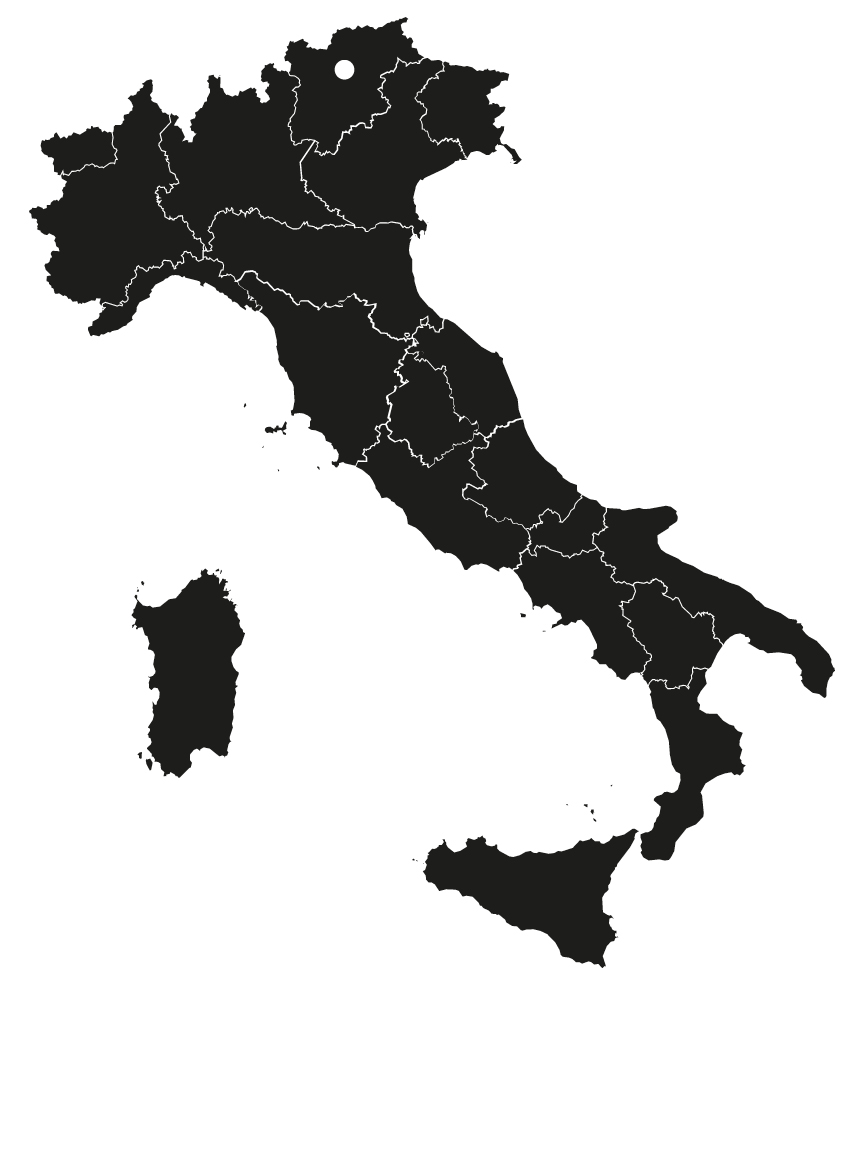
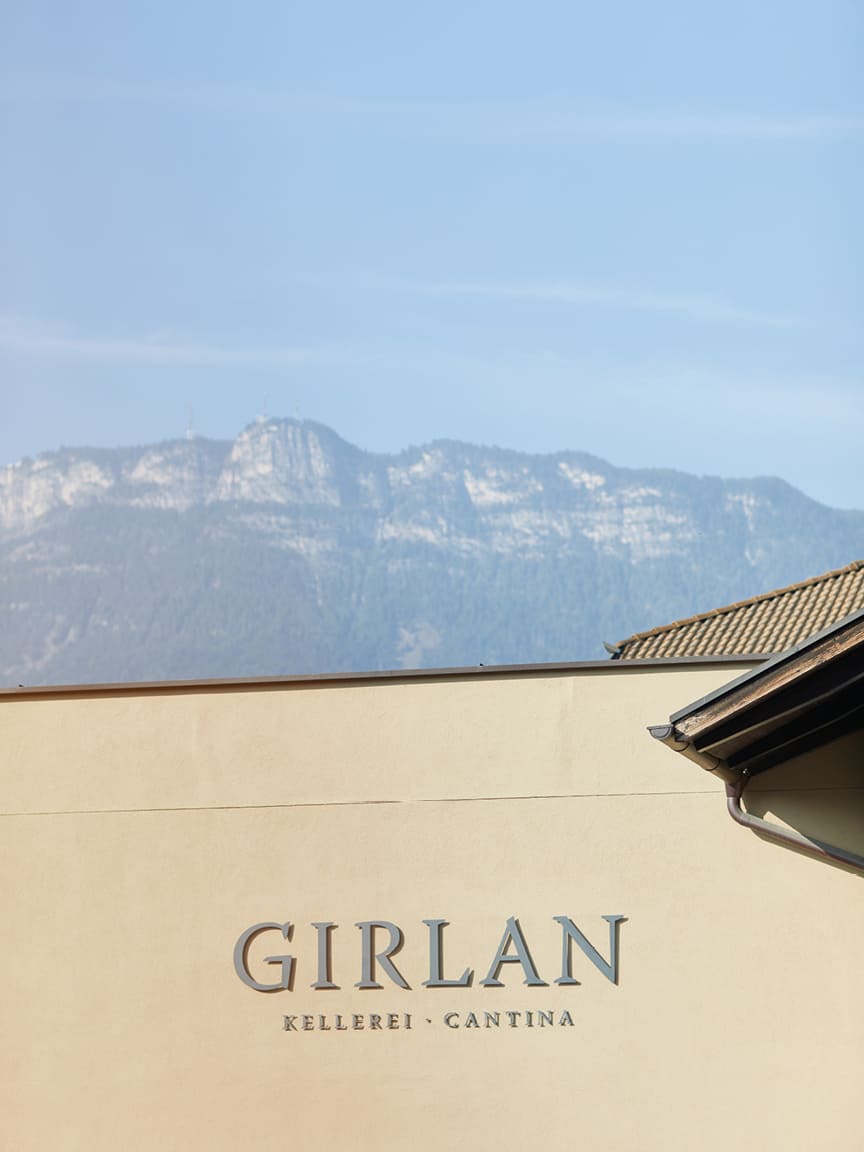
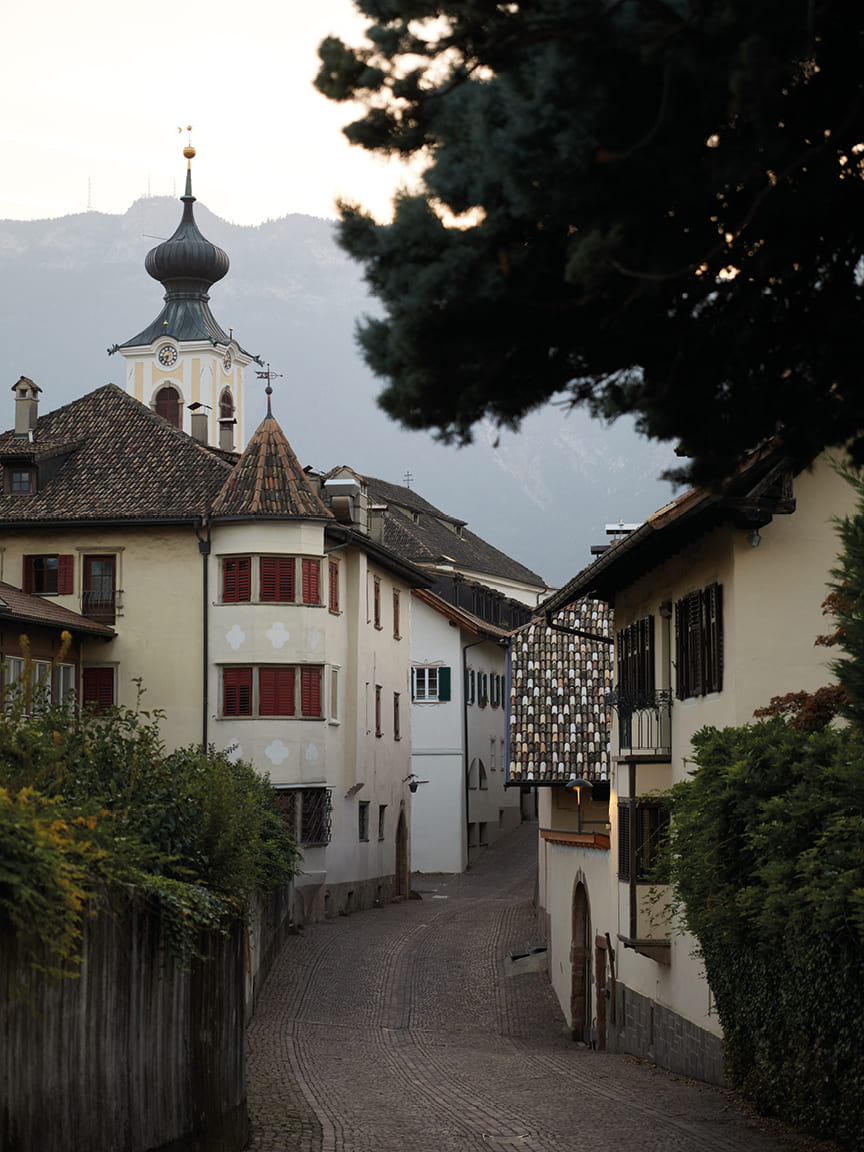
Banner, Cantina Girlan is perched on the slopes of the Tyrolean Alps, in Italy’s northernmost region. Above, the Cantina Girlan winery and visitor center are located on the grounds of the original 16th-century farmhouse in the heart of the village of Girlan
LASTING LEGACY
Cantina Girlan is located on the grounds of the original 16th-century farmhouse in the heart of the village of Girlan where the winery was founded in 1923. I am meeting Lorandi in the striking Vinotheque tasting rooms, architecturally designed to take advantage of the vaulted ceilings. Also sympathetically designed is the restored ancient staircase that leads visitors theatrically down to the cellar, while the paved flooring, with its fragments of stone, is designed to resemble the large erratic rocks that make up the landscape of Girlan. It’s a delightful space, modern yet rooted in history, warm and without pretension. Judging by the number of visitors here on a midweek afternoon, it is also clearly a success with locals and wine tourists.
The 24 winegrowing families who collectively laid the foundation for what was to become Girlan 100 years ago remain intimately involved with the company. Meanwhile the winery continues to embrace the collaborative model with its winegrowing families farming 230 hectares of vineyards in the finest production areas of Oltradige and Bassa Atesina. These are not big plots; in fact on average, each family farms just over one hectare, which encourages an incredible level of attention to viticulture.
Crucially, Girlan winemaker Gerhard Kofler is at hand at every single step, professionally guiding the winegrowers, offering his expertise throughout the seasons to ensure each and every plot performs to its very best. He controls all aspects: from the grape variety that best suits the plot, to the exact harvest time, down to the yield. Our visit coincides with harvest and it is mesmerizing watching Kofler and his team at work, inspecting each and every hand-picked batch that comes into the Girlan winery.
Meanwhile, as the elected chair Lorandi directs and manages Girlan’s vision, a task he doesn’t take lightly. “A huge part is based on trust between the winemaker, agronomist and grower,” he tells me. “We guide our family of growers throughout the year to achieve the quality we require. At the end of the day, the most important component is the quality of the wines.”
Everyone is invested and thus deeply, deeply involved, which becomes apparent when we are taken around the vineyards by Girlan sales and marketing manager Marc Pfitscher, who greets the growers warmly at the various plots. A native of Alto Adige, thirty-something Pfitscher and his girlfriend returned following years of studying and working in Austria and Germany. As have some other Girlan staff we meet. He tells us the quality of life is just too good here with summer hiking and wild lake swimming and winter skiing. Like many his age, Pfitscher volunteers as a mountain rescuer. And it’s hard not to be charmed by the sense of camaraderie you see in Girlan so often lost in the larger corporate world of wine.
As we drive around the estate, the Dolomites framing this picture-perfect landscape, Pfitscher recounts the stories of some of the more prominent Girlan members. There is Hansjörg Holzknecht, the owner of Trattmann vineyard, who cultivates Pinot Noir for the Trattmann Pinot Noir Riserva. Sitting on the executive board and with some of the best-located vineyards is Josef Niedrist, whose grandfather was one of the 24 who founded Girlan. He now runs a wine nursery, providing the best quality clones and rootstock to other vineyards. Meanwhile, joining the winery in 1980, Patricia von Elzenbaum’s family farms only Pinot Noir, with Girlan Patricia Pinot Noir named in her honor.
The set-up, I later suggest to Lorandi, resembles a top-league soccer team with him as the coach, and with each player aware of their role within the team’s overall success. His face lights up. “We are a team, and I see myself as the coach and as a visionary who brings in the ideas. My job is to motivate and create a positive atmosphere. It was tough at the start, but as you see we have a great team.”
Lorandi joined Girlan in 2008 and was elected chair of the winery two years ago, with democratic voting taking place every three years. “I see my role as representing the winery to the outside world. I look at what the market wants and needs, and where we can be in a decade or more. This involves a lot of forward planning because the results of the decisions we make now will be rewarded in five to ten years.”
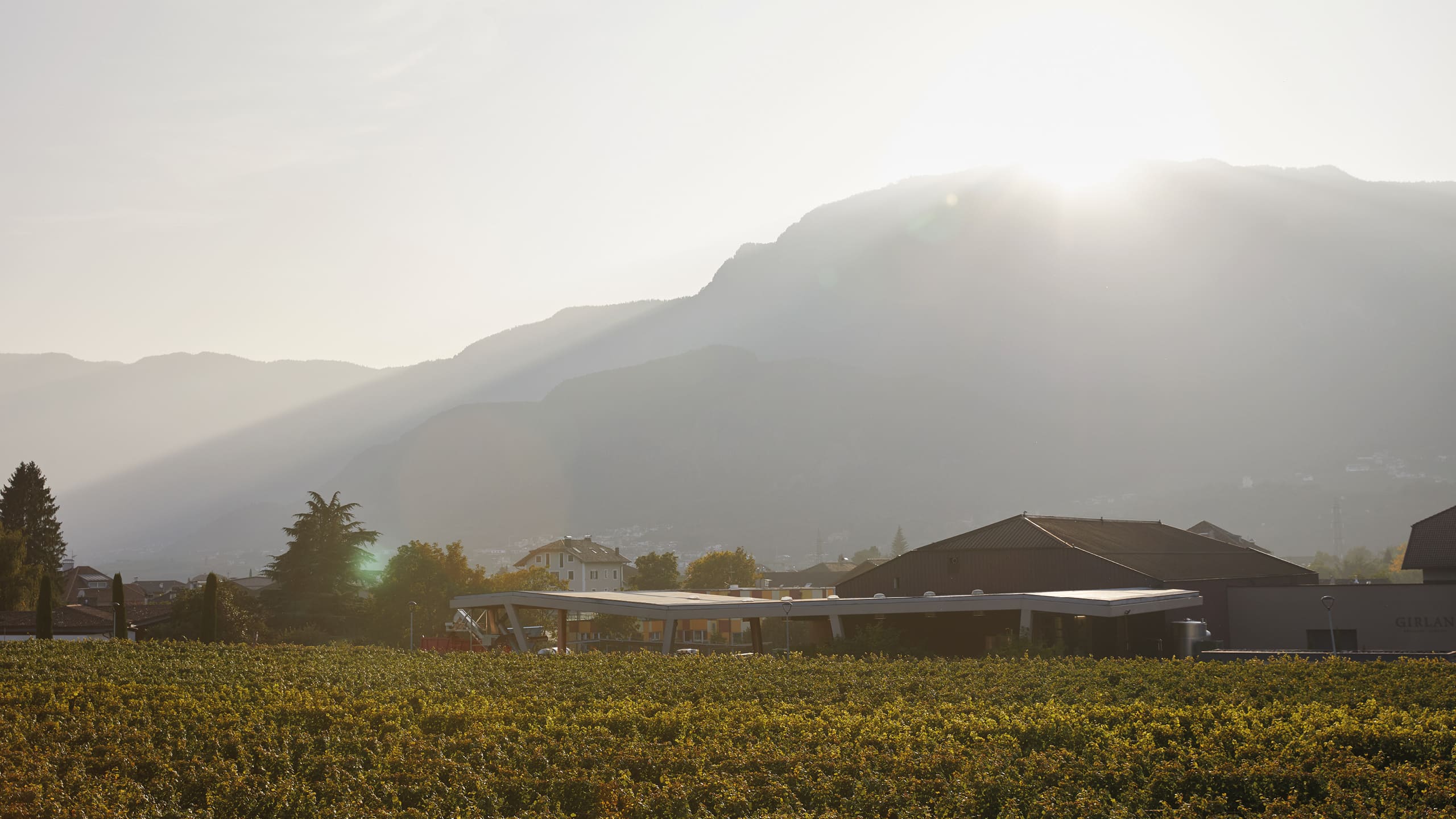
The Dolomites and Alps to the north have a positive cooling impact on the Alto Adige region,
while the Mediterranean to the south brings in a much warmer climate,
making it an ideal terroir for winegrowing.
“Our winemakers mostly studied in Austria and Germany but are influenced by Italy. You could say we take German rational thinking and blend it with Italian creativity”
Cantina Girlan chair Oscar Lorandi
Cantina Girlan chair Oscar Lorandi at the winery.
HIGHER GROUND
The high-altitude Alto Adige region is ideal for winegrowing. To the north are the Dolomite mountains and Alps, which have a positive cooling impact on the territory, while the Mediterranean to the south brings in a much warmer climate. Here, days are warm and nights are cool, and the soil benefits from gravel stone, limestone and volcanic soils – all of which help with growing different grape varieties. The Alto Adige terroir also gives Girlan wines their unique characteristic, which Lorandi describes as fresh, crisp, salty, high minerality and with a huge personality.
Kofler joined Girlan around the same time as Lorandi. “Like much of Italy the quality of wine here wasn’t great in the 1980s and 1990s. It was quantity over quality,” recounts Lorandi. “Our mission from the start was to create a strong identity. This meant a focus on a maximum of five or six varieties, because you sacrifice quality if you work with many grape varieties in one area.”
Around 15 years ago Girlan set out to rethink its wines. This meant shifting the focus to international varieties, primarily Pinot Noir and Chardonnay, which cultivate extremely well in this region. An extensive program of single-vineyard vinification followed to explore the microclimates and soil compositions. The team led by Kofler worked directly with the growers to investigate how certain varieties grow parcel to parcel, and the expression this will give to the wines.
Fast-forward to the present day, and over 40 hectares on the winery’s primary crus in Mazon are dedicated to growing Pinot Noir, with a focus on enhancing the characteristics of the wine to be unique to Alto Adige. The west-oriented Mazon vineyards, which extend between 360 and 430 meters above sea level, are regarded as among the best sites to grow Pinot Noir in Italy. The clay soil contains limestone, and the slopes face the afternoon sun, for vineyards which benefit from superb conditions to produce a Pinot Noir noted for its elegant structure, including Patricia Pinot Noir and Trattmann Pinot Noir.
Lorandi says: “Pinot Noir cultivates well here thanks to the cooler air and limestone, clay soil, as the grape requires slow ripeness, and its thin skin favors a temperate climate. Twenty years ago, only 10 to 12 hectares from the 230 were dedicated to Pinot Noir; now 60 hectares are dedicated to the grape.”
And there has been great critical acclaim. Girlan is now recognized as one of the top quality Pinot Noir producers within Italy with Trattmann Pinot Noir Riserva awarded Gambero Rosso’s “Tre Bicchieri” distinction for 11 consecutive years (2010 to 2020), and Concorso Nazionale del Pinot Nero ranked the wine “Best Italian Pinot Noir” for the 2011, 2012, 2016 and 2020 vintages.
Meanwhile, Chardonnay has become Girlan’s flagship white wine. The grapes are predominantly grown on 25 hectares in the main cru of Girlan where most of the vineyards are situated. The cru sits amidst gently rolling slopes on the Monte di Mezzo between San Michele and the Valle dell’Adige, at altitudes 450 to 550 meters above sea level; the soil is gravelly and argillaceous, while the temperature can flux between day and night, especially in the fall. Poor clayey soils, low yields and gentle vinification bring a lot of freshness, good structure and its unique character to the Chardonnay wines.
Extensive experiments with viticulture and vinification led to Marna Chardonnay. Making its debut with the 2022 vintage, Marna is produced from a selection of the best Chardonnay grapes at Cantina Girlan. Pinot Grigio and Sauvignon Blanc are also grown on the Girlan cru, with the terroir’s unique characteristics producing white wines that are mineral, fresh and with a clear structure.
Cellar Work
Girlan’s winemaking philosophy is focused primarily on ensuring nature does its best in the vineyards with as little intervention as possible in the cellar. Winemaker Kofler likens the approach to a fusion of science and philosophy. Knowledge of each individual vineyard, the varieties and clones is fundamental, “to allow the processes dictated by nature to take its course,” he offers. This means the smallest plots are harvested individually, depending on the degree of ripeness of the grapes, which is evaluated by Kofler.
Meanwhile precision and clarity, the essence of Girlan’s wines, are controlled in the cellar, so fermentation time and temperature are precisely monitored to highlight the fruit’s character and connection to terroir.
The Chardonnay wines are vinified in 5,000 to 7,000-liter Slovenian oak to maintain the fresh, fruity, clean, salty and mineral characteristics of the wines. Girlan Pinot Grigio and Sauvignon Blanc will undergo fermentation in stainless steel tanks at a controlled temperature. The Patricia Pinot Noir is barrel-aged for a year in large 1,500 to 5,000-liter French oak, aging further in the bottle. Trattmann Pinot Noir spends one year in barrique, followed by eight months in large French oak barrels while undergoing further bottle aging before market release.
“No matter what grape variety, our white wines have to represent our territory to be fresh, clean, salty and mineral,” says Lorandi. This involves maturation in large Slovenian oak barrels or stainless-steel tanks for no more than a year. He brings as an example the estate’s prized Marna Chardonnay, where the role of the wood is to slightly lift the wines rather than impose flavors. “The wood should always be a subtle characteristic of our wines.”
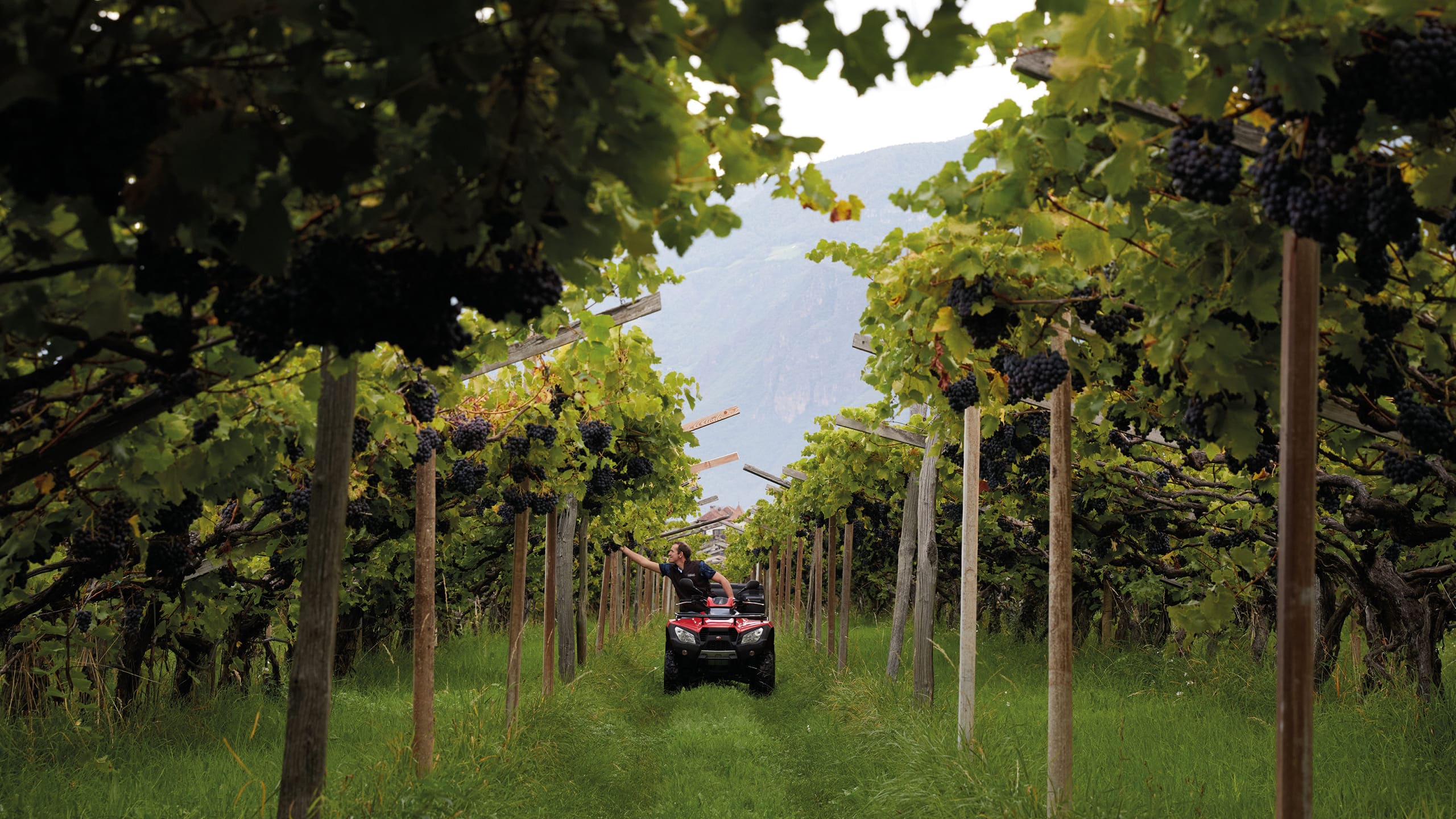
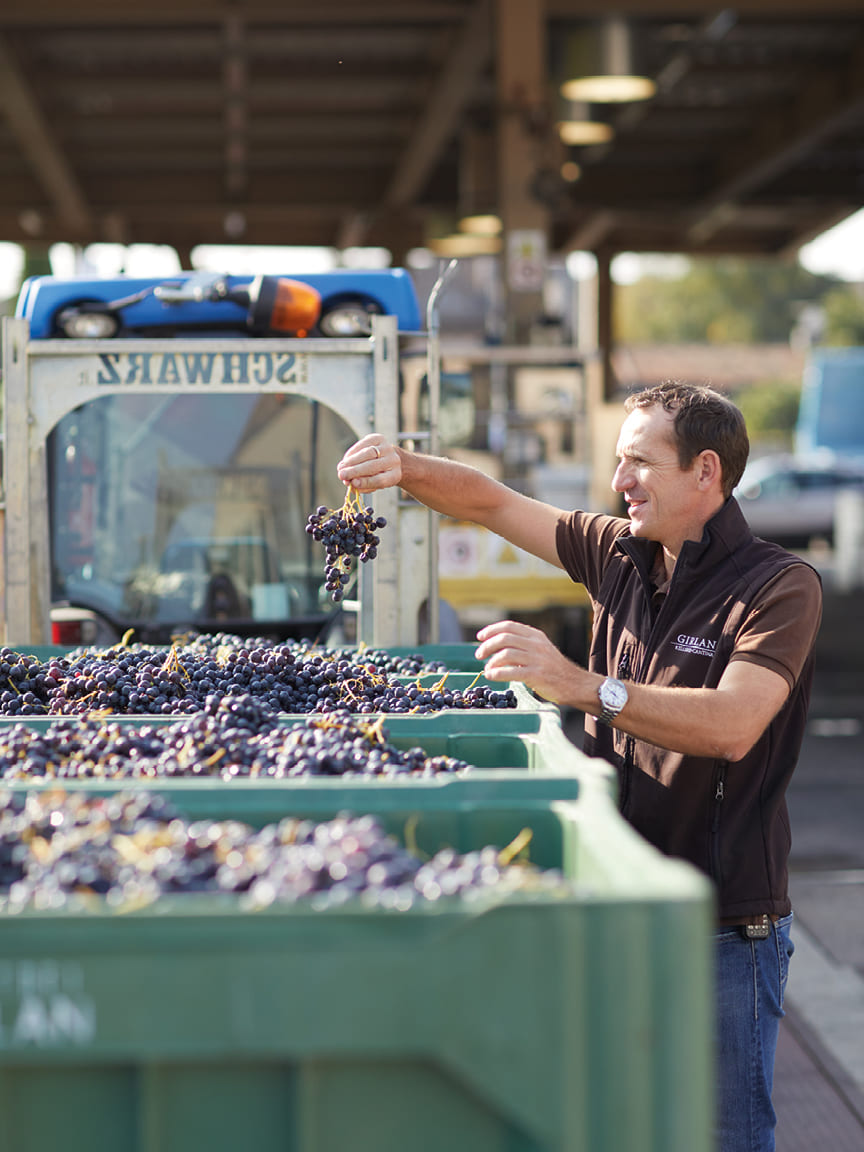
Girlan winemaker Gerhard Kofler professionally guides the winegrowers who farm 230 hectares of vineyards in the finest production areas of Oltradige and Bassa Atesina
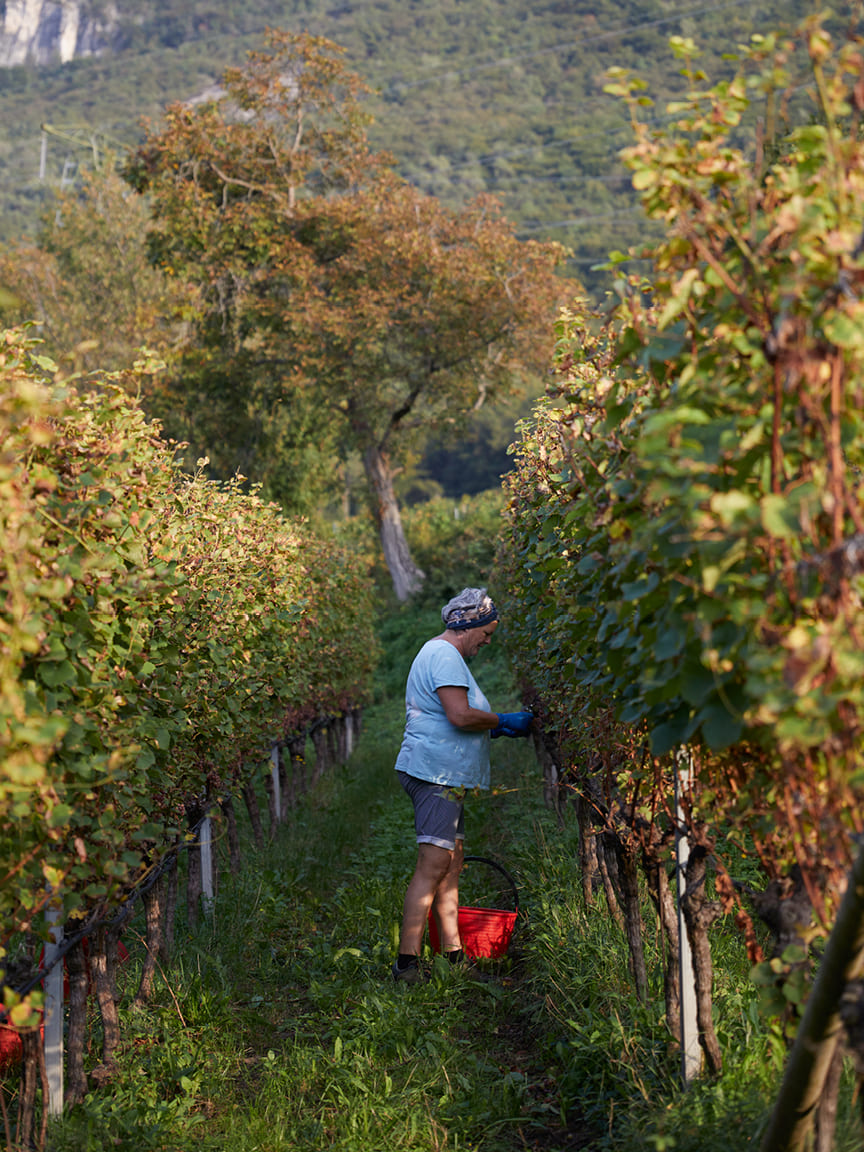
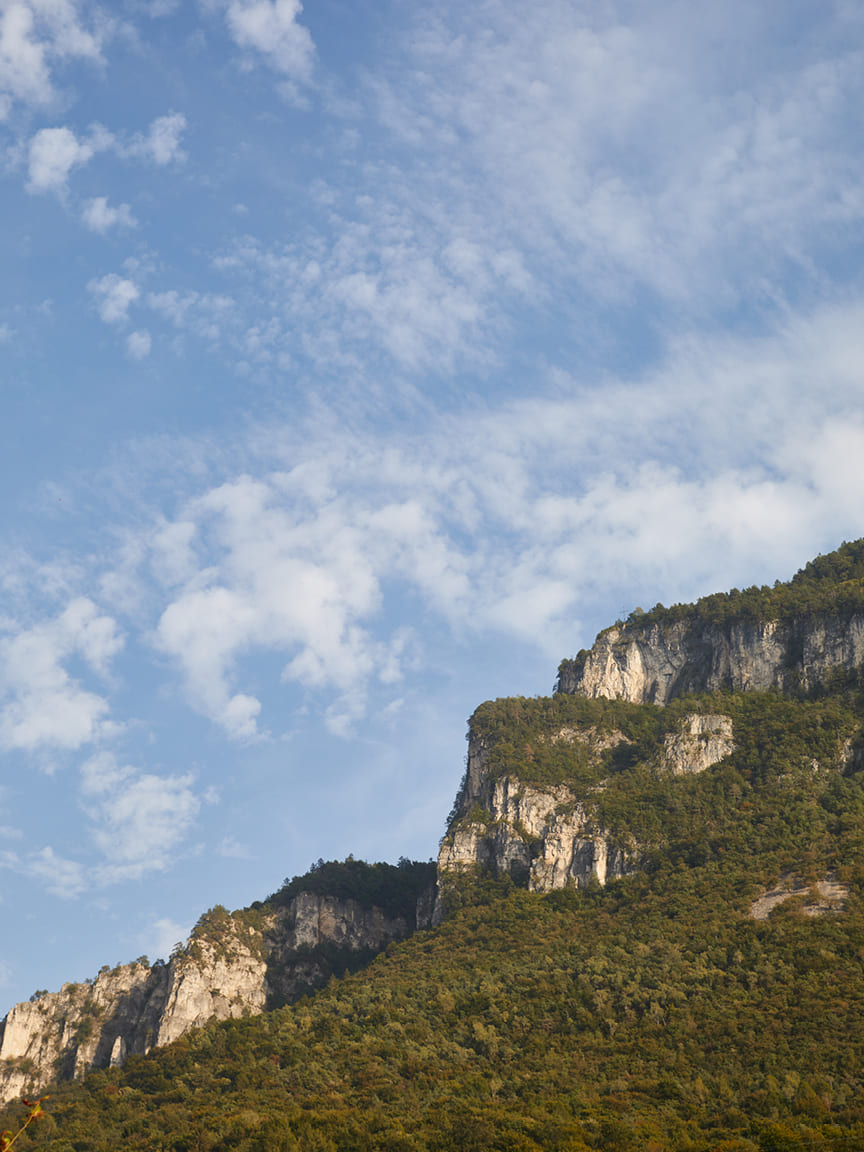
ONWARDS AND UPWARDS
Last summer saw most of Europe experience extreme weather from heat waves to heavy downpours, even in August. I ask Lorandi what measures he is taking to help combat the negative impact of climate change. “Since our policy is not to make too many interventions in the cellar, we look to new ways of growing to help reduce alcohol levels,” he replies. “This doesn’t mean picking the grapes earlier, as this will naturally reduce ripeness, but measures like leaving more leaves on the vines to protect the fruit from direct sun, or working with ancient growing methods that protect the grapes.”
Solar panels largely provide energy in the winery. For production, Girlan has invested in an in-house photovoltaic system, reducing energy consumption by 50 percent.
Pesticides are avoided in the vineyards, as is the use of artificial irrigation. Natural cork is used in bottling and from next year, the entry-level wines will be sealed with screw caps. Lorandi is acutely aware that new generations are more open to change. “Our vision now is to reduce the weight of the bottles across the range which will cut our carbon footprint substantially.”
Not long after we meet, Lorandi confirms the board has given the green light to pursue this initiative with the team now looking to work with lightweight 410-gram bottles across the range. “We need to move the conversation to the quality of the wine, not the bottle. As winemakers, we need to educate and excite the customer. I strongly believe the attitude of the consumer is changing and is in line with this.”
Lorandi is optimistic about Girlan’s future. “We have a wonderful team here and committed wine growers. I’m now 55 and have been with the winery for 16 years. In the next ten years my dream is to give my colleagues the keys to a winery that can go on for the next 100 years. Success for a winery like ours is to make individual wines that represent the territory. Our mission isn’t just to produce good wines, but to give respect to nature, and we have achieved big steps in the last 20 years.”
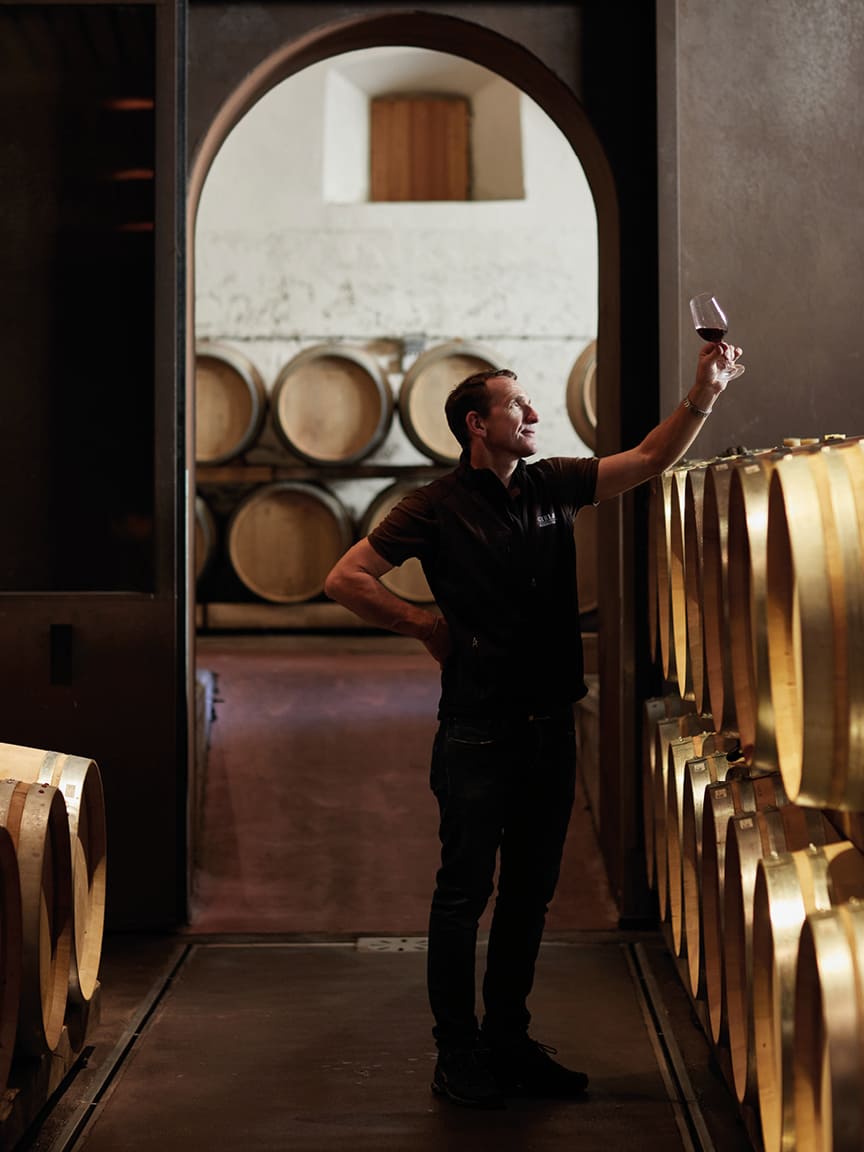

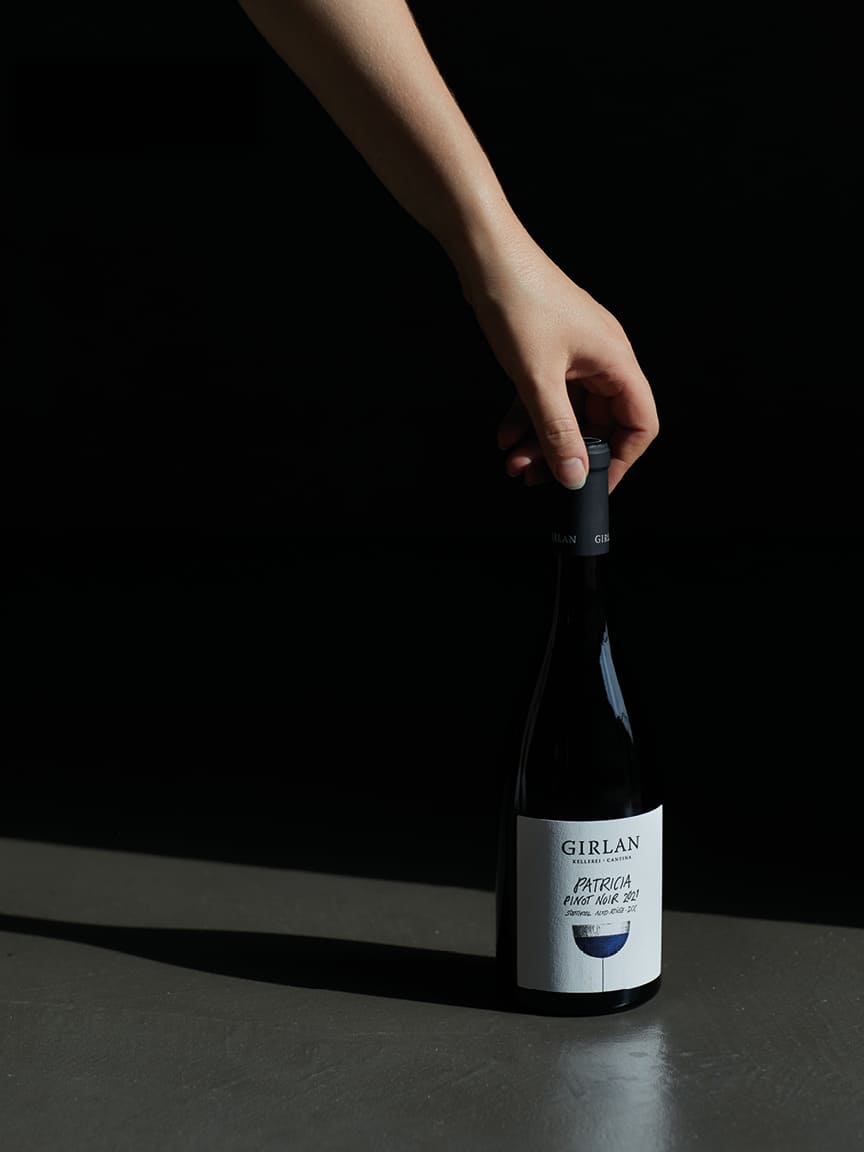
Photography ©Helen Cathcart, Spinach
We recommend
A CASE FOR TEXTURED WHITE WINES
John Irwin puts forward a compelling case for rethinking “textured whites,” singing the praises of these once snubbed wines – including the much-maligned Gewürtztraminer
NEW DREAM: JERMANN’S RAMÂT PINOT GRIGIO
Nargess Banks catches up with Felix Jermann to see how the new Ramât wine links to the Friuli estate’s past, present and future
LIQUID ASSETS
Chosen with care like art, fine wine can be a great investment. But what are the best ways to get started? Suzanne Denevan-Brown kick-starts our new series
EXPLORE MAZE ROW’S HALO WINES
Maze Row has curated a collection of wines from unique producers, each with their own individual expression. Sommelier and Italian wine specialist John Irwin picks out the halos in the company portfolio
